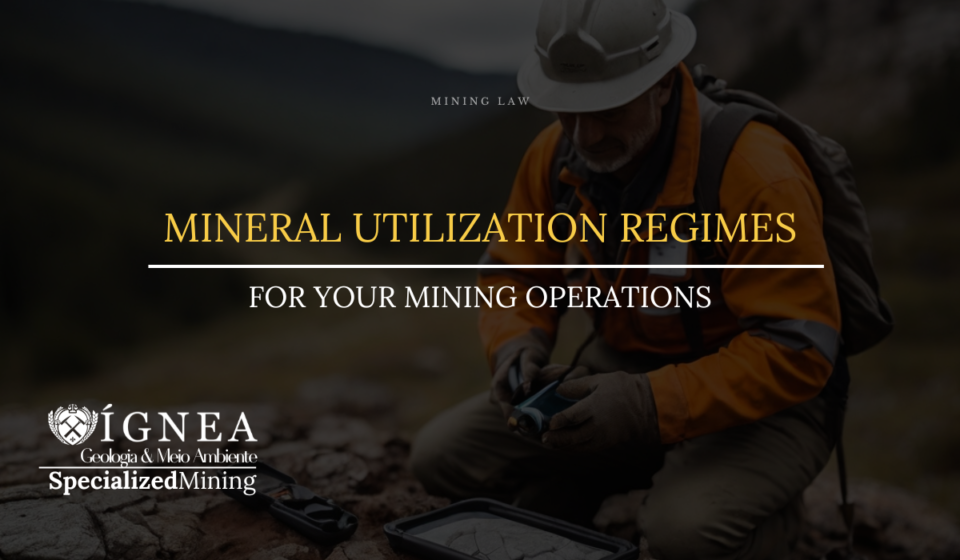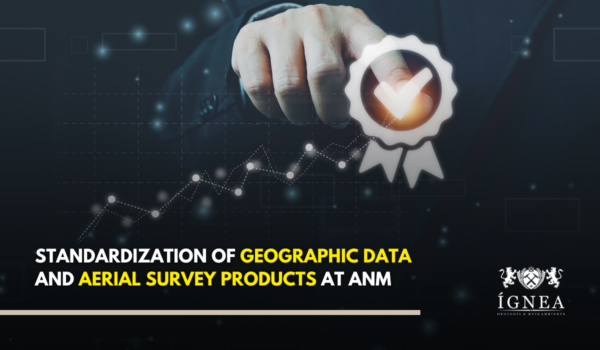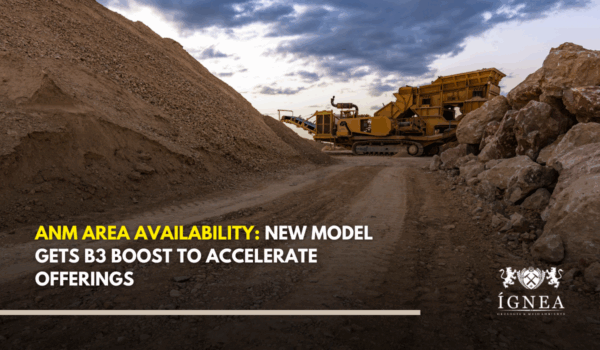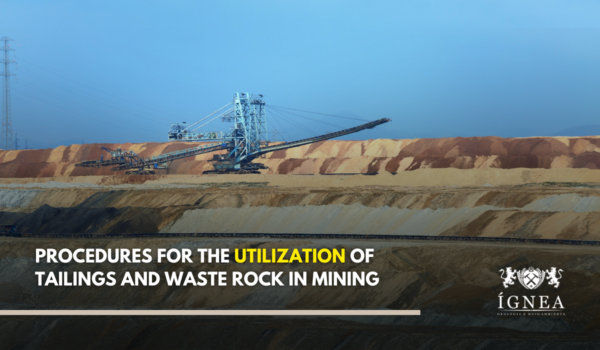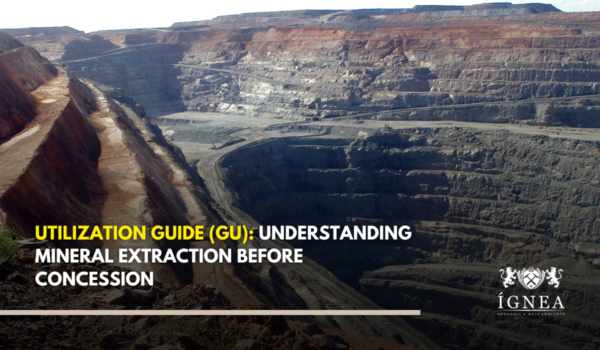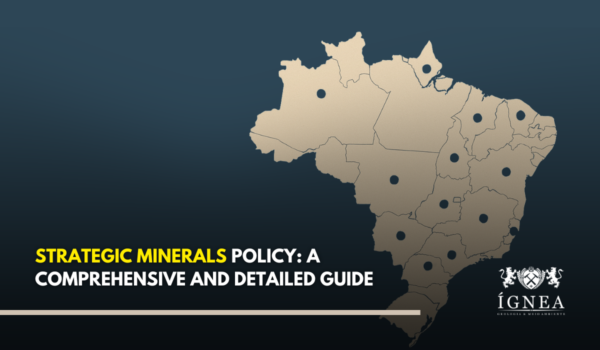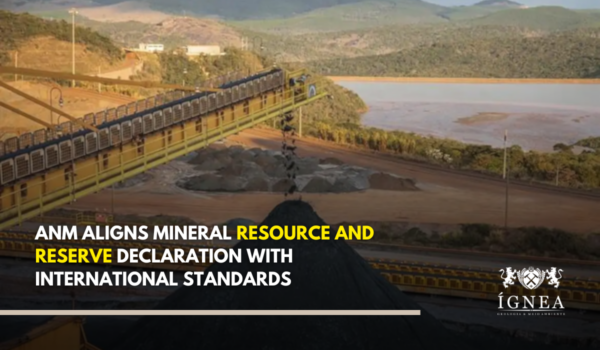Before delving into the regimes, it’s important to succinctly understand how mining operates in Brazil.
Historically, regulation was overseen by the now-defunct DNPM (National Department of Mineral Production), an agency under the Ministry of Mines and Energy, directly controlled by the government until the enactment of Law 13,575 in 2017.
With the creation of the National Mining Agency – Agência Nacional de Mineração (ANM), this dynamic changed. The ANM, after a transition period, took charge of the sector. This landmark reflected the expected and necessary changes in regulatory matters, highlighting the need for autonomy in technical bodies. The Agency introduced various resolutions to standardize long-awaited rules, although not always to general satisfaction.
The essence of mining lies in the exploration of mineral substances belonging to the Union. This is the crucial point: land ownership does not imply possession of the present mineral resources.
The right to explore and subsequently mine is granted through the fundamental principle of the right of priority, one of the cornerstones of competitiveness in mining.
This principle, found in the Mining Code (Decree Law No. 227, of 28/02/1967) and the recent Mining Code Regulation – NRM (Decree No. 9,406 of June 12, 2018), gives priority to the initial discoverer.
It is the responsibility of the Union to organize:
- The administration of mineral resources;
- The mineral production industry;
- The distribution of mineral products;
- The trade and consumption of mineral assets.
The National Mining Agency (ANM) regulates the exploitation of mineral resources through different Mineral Utilization Regimes, which include:
- Authorization and Concession Regime: This regime encompasses the common procedures of exploration authorization and mining concession, following the logic of conducting preliminary research before mineral extraction.
- Licensing Regime: Requires approval from the local administrative authority for the application, providing greater legal security to the process.
- Artisanal Mining Permit Regime: Intended for the artisanal exploration of mineral resources by small miners and cooperatives, regulating this specific practice.
- Monopolization Regime: Applied to specific minerals, such as radioactive materials, petroleum, natural gas, and other fluid hydrocarbons, establishing an exclusivity regime in their exploitation.
- Extraction Regime: Authorized only to direct or autarkic entities of the Union, States, Federal District, and Municipalities, for exclusive use in public works directly executed by them.
The following will explore the main Mineral Utilization Regimes, ensuring legal compliance and providing the best framework for each mining venture.
Authorization and Concession Regime
The authorization or concession regime is the most prevalent form in mining activities, representing approximately 90% to 95% of current ongoing mineral processes. This covers virtually all mineral substances, except those subject to state monopoly, such as petroleum, natural gas, and radioactive minerals.
In the context of mining, the imperative logic is to conduct research to understand mineral deposits, their extent, grade, and feasibility for extraction.
The authorization for exploration precedes the mining concession, forming interdependent parts of a mining process. Initially, research aims to understand and quantify mineral resources, providing a foundation for subsequent mining activities.
Note: During research, it is possible, under exceptional circumstances, to obtain a utilization permit – guia de utilização that allows mineral extraction before the mining concession, aiming to finance and deepen the research.
In this regime, both individuals and legal entities can apply for research authorization. However, for the mining concession, only qualified legal entities can apply, proving technical and operational capacity.
Applicability and Restrictions
The Authorization and Concession Regime covers virtually all mineral substances, except those protected by state monopoly. Area restrictions vary depending on the category of the mineral in question:
- For substances such as metallic minerals, fertilizers, coal, diamonds, among others, the maximum area is 2,000 hectares.
- Minerals like rocks for covering and other substances have a limitation of up to 1,000 hectares.
- Specific substances, such as mineral waters, gems (excluding diamonds), industrial sand, among others, have a restriction of up to 50 hectares.
Requirements and Initial Reports
The main projects comprising these regimes include the research application through the Mineral Research Electronic Registry – Registro Eletrônico de Pesquisa Mineral (REPEM), a platform dedicated to this purpose, the final research report, the partial research report, and the application for the utilization permit (when necessary). Subsequently, there is the mining concession application if the process progresses to that stage.
Observing the stages and obligations inherent in these regimes is essential for the maintenance and validity of mining titles. Professional guidance throughout the process is crucial to guide and ensure compliance with all legal requirements.
When initiating the application process in the field of mining law, it is crucial to gather a series of specific documents and information to ensure the effectiveness and compliance of the request. The necessary documents are listed below, differentiating between individuals and legal entities:
For Individuals:
- Full name of the applicant.
- Indication of nationality.
- Marital status.
- Occupation.
- Domicile.
- CPF (Individual Taxpayer Identification) of the applicant.
For Legal Entities:
- Corporate name of the company.
- Registration number in the constitutive acts at the competent Trade Registry.
- Company address.
- CNPJ (National Register of Legal Entities).
For Both (Individuals and Legal Entities):
- Technical Responsibility Annotation (ART) from a qualified professional (geologists or mining engineers).
- Electronic pre-application with a validity of 30 days, available on the ANM website.
- Payment receipt of the fee, generated from the available boleto on the website, varying according to the mining regime.
Graphic and Cartographic Documents:
- Situation Plan, containing the georeferenced polygon of the area.
- Descriptive Memorandum, graphical representation of the area with numbered vertices, in geodetic coordinates (degrees, minutes, and seconds) in SIRGAS 2000 datum.
- Indication of the superficial extension of the intended area, in hectares, in the Municipality and State where it is located.
Power of Attorney:
- If the application is not signed by the applicant, it is necessary to present a notarized power of attorney.
Research Work Plan:
- Accompanied by the budget and schedule planned for the execution of the work.
Deadlines, Requirements, and Obligations
In the Authorization of Research and Mining Concession process, deadlines and obligations are essential to ensure compliance with Brazilian mining legislation. The main ones are highlighted below:
Research Authorization
- Research Application: At the beginning of the process, it is essential to pay attention to deadlines such as the requirement and, in case of rejection, the deadlines for reconsideration and appeal.
- Communication of the Start of Research Work: This period is 60 days. Not communicating the start of work results in a fine but does not imply immediate loss of the title.
- Payment of the Annual Hectare Fee: For permits published between January and June, payment must be made by the end of July. For permits or extensions published from July to December, payment is until the last business day of January of the following year.
- Delivery of the Final Research Report: The deadline is until the last day of the permit’s validity. Not meeting this deadline results in a fine and the possibility of losing the title.
After Approval of the Final Research Report
The crucial deadline is one year after the approval of the report to request the mining concession. If this deadline is not respected, the right to request the concession is lost.
Mining Concession
- Start of Mining Work: Must be communicated within six months. If not possible, an extension can be requested to start the work.
- Issuance of Possession: The deadline is 90 days after the request. Non-compliance results in a fine and retention of issuance.
- General Obligations: Include compliance with requirements, technical responsibility, payment of fees, and adherence to NRM (Mining Regulatory Standards).
The mining concession does not have a determined deadline but is linked to the exploitation of the deposit, requiring compliance with obligations throughout the granted period, such as the presentation of reports and mine closure actions.
Guarantees and Procedures
It is important to note that, although prior agreement from the municipality or landowner is not required for the issuance of titles, conducting research on others’ properties requires specific authorization and often financial compensation.
___________________________________________________________________________________________
Licensing Regime: This regime is aimed at the exploitation of substances used immediately in construction, such as sands, gravels, gravels, rocks, clays, among others. It is applicable in restricted areas, limited to a maximum of 50 hectares.
Artisanal Mining Permit Regime: Specific to the exploitation of artisanal mineable ores, such as gold, diamond, cassiterite, columbite, tantalite, wolframite, scheelite, other gems, rutile, quartz, among others. This regime has area restrictions, allowing up to 50 hectares for individuals or sole proprietorships and up to 10,000 hectares in the Legal Amazon, as well as 1,000 hectares for other regions, for cooperatives of miners (according to Federal-Law No. 7,805/89).
Extraction Regime: This regime is reserved for substances for immediate use in construction, applied by entities of the direct or autarkic administration of the Union, States, Federal District, and Municipalities. Its use is exclusive in public works executed directly by these entities. This regime is governed by the Sole Paragraph of Article 2 of the Mining Code.
Monopolization Regime: The Monopoly Regime occurs when, due to special law, it depends on direct or indirect execution by the federal Executive Branch.
According to Article 177 of the Federal Constitution, in the field of mining, it constitutes a Union monopoly:
- Research and mining of oil and natural gas deposits and other fluid hydrocarbons;
- Research, mining, enrichment, reprocessing, industrialization, and trade of ores and nuclear minerals and their derivatives.
___________________________________________________________________________________________
If you have any questions about your mining venture or if you want more detailed information, please contact us.
Our team of specialized consultants will be happy to assist you and provide personalized support according to your needs.

